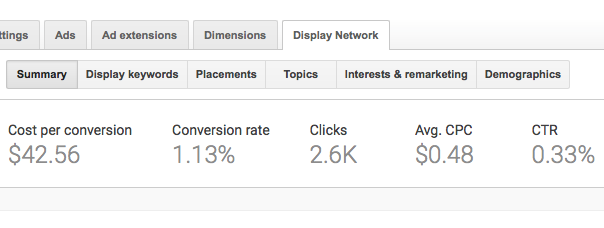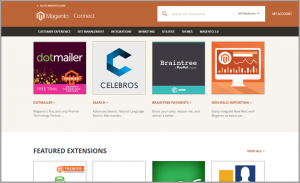The Google Display Network, also know as GDN, reaches 90% of internet users worldwide, appearing on over two million websites and in over 650,000 apps. For a digital advertiser, GDN is one of the most efficient ways to expand your presence into the display ecosystem. To run ads in GDN all you need is access to a Google AdWords account, and then your ad type possibilities include: text, video, banner, Gmail, and app ads. Sounds easy enough, right?
You might be surprised to learn that I was once skeptical of GDN. Now that I have years of experience and testing under my belt, I can tell you that GDN really is an efficient way to expand your reach. I can also tell you that advertising on GDN can be a drain on your budget if you’re not careful with your strategies and optimizations.
As an avid GDN advertiser, here are four of my key strategies to help you make GDN a successful part of your digital advertising campaigns.
#1: Utilize First-Party Data for a Retargeting Campaign
My number one tip, especially if you are first starting out with GDN, is to use your first-party data to run retargeting campaigns. In Google AdWords, there is an opportunity under “Shared Library” for the advertiser to build out unique audiences. Start here. The different audiences that I’ve built and found success with include:
- Site Visitors: Segment visitors based on which product or service site pages they’ve visited. This allows you to build and serve customized creative to drive your lower funnel audiences to convert more efficiently.
- Email List Match: Pull a list of current prospect or contact emails from your customer database and segment. I will say it again, but for retargeting efforts, the better you can segment your audience the better you will be at delivering customized creative for that audience.
- Customers Who Have Called: Address your current database again, but this time get even more detailed with segmentation. With call analytics, you can access not only who called, but also the marketing source that drove the prospect to call and insight into the conversation. Use this data to customize your creative and increase your bids.
- Converters (Online, In-Store, or via Phone Call): Target or exclude this segment,but take some action to not waste impressions on an audience that already converted. Instead, upsell or re-engage your current customers.
For all of your retargeting efforts, ensure you break out your audiences into different ad groups. This helps you control bids and measure performance to make future optimizations.
#2: Reference Your Google Analytics to Prospect Into New Audiences
The Audience report of Google Analytics may not be referenced as often as the Acquisition or Behavior reports, but it should be when running display campaigns. The Audience report gives you a ton of insight into the types of users that visit your site and the types of users that convert or don’t convert. In GDN, you can include or exclude audiences in your prospecting campaigns by implementing the insights directly from this report. The Interests report in Google Analytics will directly match the audience targeting section in Google Display Network!
When setting up a GDN campaign, navigate to the “Display Network” section and you will see the different targeting options to include or exclude demographics, placements, keywords, topics, and interests. Match these up with your Google Analytics data for optimum performance.

Don’t forget to segment your audiences by ad group. This will give you a better idea of which audiences are performing and converting the best. You’ll also want to track every type of conversion, both online and offline, which includes phone calls (you can capture both conversion types in Google Analytics). You absolutely want to ensure that you’re reporting on the true success of your campaign.
#3: Test Click-to-Call Ads for Mobile Device Targeting
Google allows for more customized bids by device because consumers are spending more and more time on their mobile devices. This new feature was launched early in 2016, allowing digital advertisers to run mobile-targeted campaigns. And when digital advertising is expected to drive 162 billion calls to US businesses by 2019, this new feature has made it even easier to drive inbound calls when you focus on mobile devices. t
With the introduction of DialogTech for Display, it’s now possible to run click-to-call image ads in GDN. I’ve seen success with my retargeting campaigns while testing this ad type because the users have a higher purchase intent since they’re generally a bit lower funnel. Some additional tips though: only run these ads on mobile and make sure to exclude desktop devices. Yes, that means segmenting click-to-call ads into their own campaign for full device bidding control.
And when it comes to the sales team, set up your ads to run only during the times you know they’re ready to receive the call. You also want to ensure your sales team knows that these inbound calls are from a retargeting campaign, along with the click-to-call ad type. The more information your sales team has, the better conversion rate you will see.
#4: Capture Your Audience Cross-Device With Responsive Native Ads
Earlier this year, Google released a responsive ad format for GDN campaigns. This addition to GDN has proven very successful for my lead gen campaigns as it’s an alternative to only running text ads. Responsive ads adapt to capture consumers while they’re natively in the research mode on any device. Advertisers can even add an image and logo to the text portion for a more visual appeal. On my responsive ads that include images, I’m seeing an increase in both CTR and conversion rates when A/B testing against standard text ads.
I hope these strategies will give you the motivation to either set up your first GDN campaign or give GDN one more shot to perform. Interested in more tips? Download the free Click-to-Call Playbook for Display Advertising.
Digital & Social Articles on Business 2 Community(72)
Report Post





